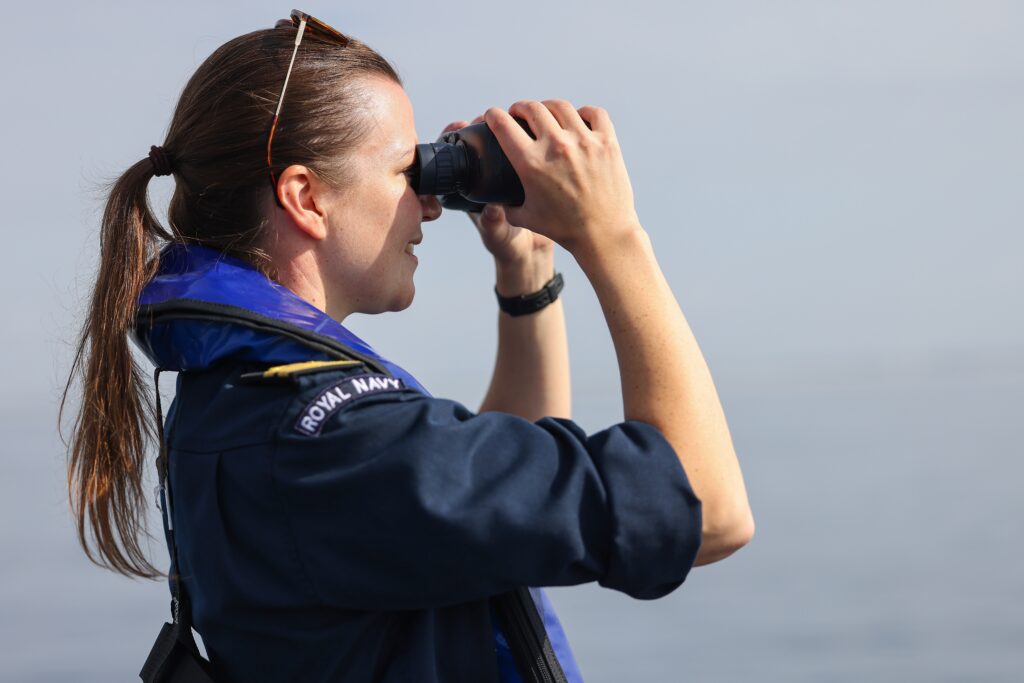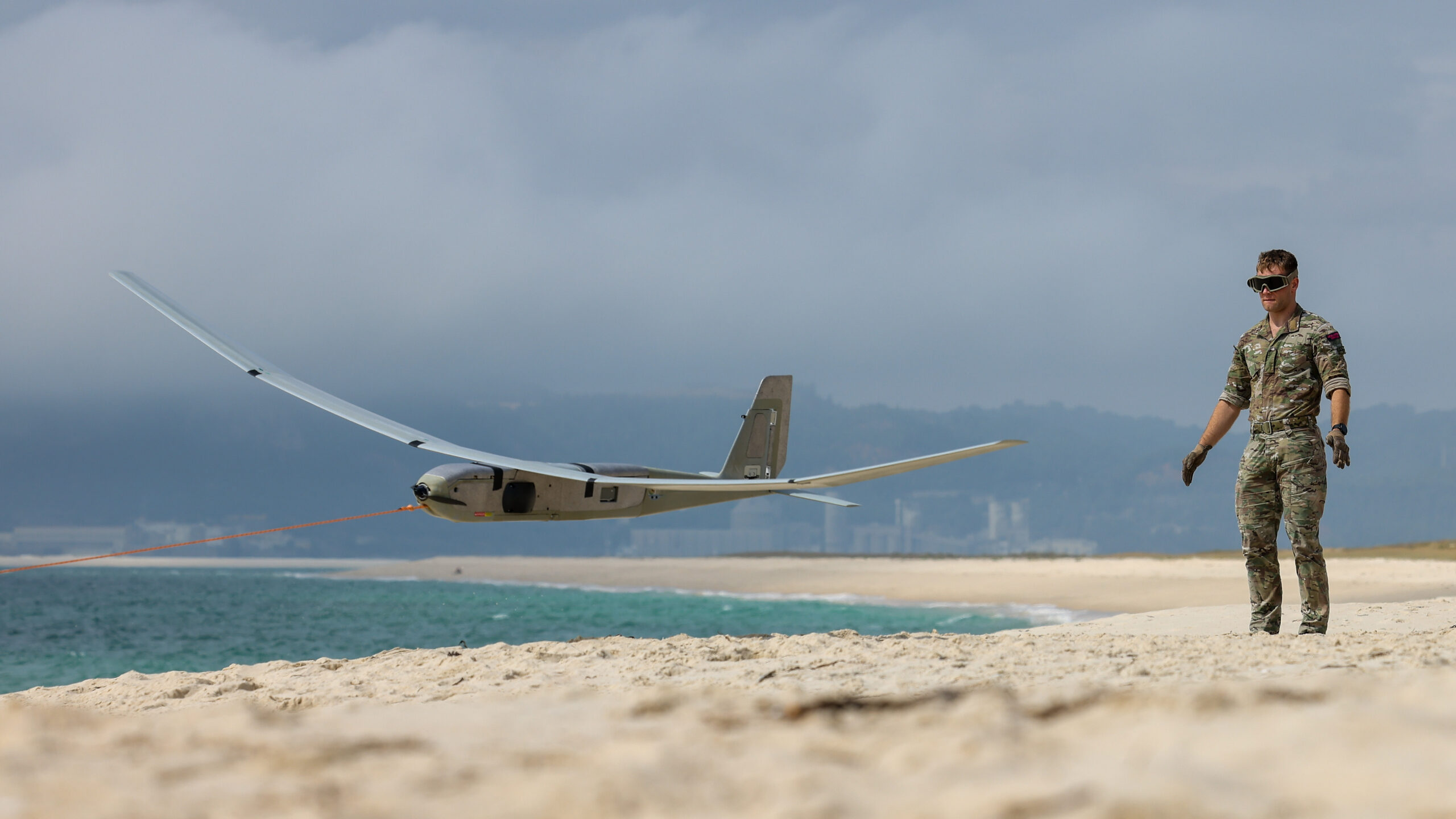The Royal Navy and allied navies controlled uncrewed vessels operating more than 10,000 miles away in Australia during major experiments in Portugal.
Under the AUKUS defence partnership, the UK, Australia and the United States are working closely together to bring advanced military capabilities to the front-line at ‘an unprecedented pace’.
To that end, the three allies are undertaking a series of experiments – known as Maritime Big Play, with the first completed last month during NATO’s annual tech exercise in Southern Portugal, known as Repmus.
Personnel from the three AUKUS navies remotely controlled vessels in Australia from a command centre in Portugal, carrying out a range of missions.
Together they pushed the boundaries of modern naval warfare, testing a range of uncrewed and autonomous equipment in mock operational scenarios, including dropping payloads from a drone, with the ultimate aim of getting advanced uncrewed technology to those operating on the front line quickly.
The Royal Navy’s Director Develop, Rear Admiral James Parkin, who oversees the Royal Navy’s Autonomy, Lethality, and Innovation accelerator NavyX and leads the teams responsible for developing the technologies and systems of the future Fleet, said: “This year was by far the biggest Exercise Repmus – with the strongest ever Royal Navy contribution to this important event.
“The successes experienced, including proving the ability of all three AUKUS navies to command-and-control vessels on the other side of the world in a tactically realistic scenario, show how close we are to realising our ambition of a genuine team of crewed and uncrewed systems, capable of operating and prevailing everywhere on the planet, from the seabed to space.”
Maritime Big Play included surveillance and reconnaissance using uncrewed systems operating from land and at sea.
Uncrewed Air Systems dropped small bombs to demonstrate how the allies would carry out precision strikes, while they were also used to launch smaller drones as a sort of mothership.
Swarms of uncrewed vehicles worked together to detect, deter and fight off threats under the water, including mines.
The exercise also saw trials by the Royal Navy of the Golden Eagle Puma remotely-piloted aerial system. Nearly double in size compared to the standard Puma, the surveillance and reconnaissance drone has a 15ft wingspan and can stay in the air for up to five hours.
Other key moments saw uncrewed seaboat APAC 24 remotely driven from Royal Navy experimentation ship XV Patrick Blackett building on previous tests conducted in the ship’s home port in Portsmouth.
Later this year, AUKUS nations will bring together approximately 30 systems and deploy them for the first large-scale Maritime Big Play demonstration in the Indo-Pacific.
The exercise will include technologies from companies in each of the three nations, with the participation of over 50 industry, science and academic partners.


